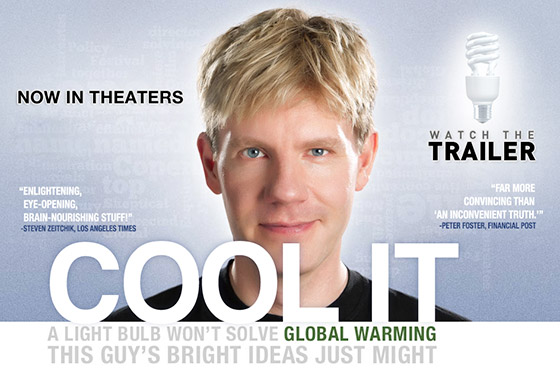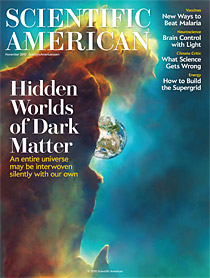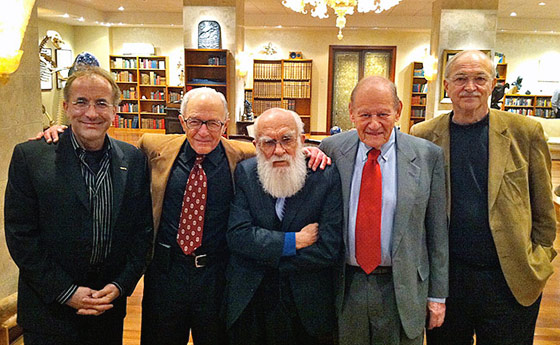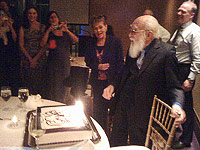Murder, Mass Die Offs, and the Meaning of Randomness
The following is an op-ed originally published in the Los Angeles Times, Tuesday January 11, 2011 (under a different title and slightly shorter).
The media once again scrambled this past week to find the deep underlying causes of shocking events. We saw it in the rush to explain the tragic murder of six people in a shopping center in Tucson. And we saw it in the rush of stories about mass die offs of birds and fish around the country.
In the case of the shooting of Rep. Gabrielle Giffords at a shopping center in Tucson, attention has turned to the motives of the shooter, 22-year old Jared Loughner, whose political ramblings about returning to the gold standard and about excessive control by the government have sent the media searching for answers in the vitriol of right-wing talk radio, the rhetoric of the Tea Party movement, and the bellicose divide between Democrats and Republicans in Congress and elsewhere.
The mass die offs of fish and birds has spurred a number of deep causal theories, including suggestions that the apocalypse is near and that secret government experiments were to blame, such as HAARP, the High Frequency Active Auroral Research Program in Alaska that studies the ionosophere that is run by DARPA, the government’s Defense Advanced Research Projects Agency, which admittedly does sound like something concocted by the writers for the television series X-Files.
We live in a causal universe, so all effects do have causes, but before we turn to grand overarching causal theories such as political rhetoric or government experiments, we must always remember the clustering effect of randomness and how our brains tend to look for and find deeper meaningful patterns even where none exist. Toss a handful of pennies into the air and you will notice that they do not land randomly on the ground. They cluster into apparently nonrandom patterns in which some are closer and others are farther apart. There is nothing inherently hidden in such a clustering effect—no concealed forces under the ground causes the pennies to fall as they do. It’s just chance. But our brains abhor randomness and always seek meaning.
The National Institutes of Mental Health estimates that about 1% of the population suffers from schizophrenia, and that more than 25% of us have some kind of diagnosable mental disorder. As well, psychologists estimate that 1–3 percent of the U.S. population suffers from psychopathy, or the inability to feel empathy and an almost complete lack of moral conduct. Using the conservative figure of 1% and a U.S. population of 300 million people, this means that some 3 million people with either psychosis or psychopathy are walking among us, as well as tens of millions more whose mental health is askew in some way. And many of those who need it aren’t receiving treatment. Given these statistics, events such as the shooting in Tucson are bound to happen, no matter how nicely politicians talk to one another on the campaign trail or in Congress, no matter how extreme Tea Party slogans are about killing government programs, and no matter how stiff or loose gun controls laws are in this or that state. By chance—and nothing more—there will always be people such as Jared Loughner who do the unthinkable.
According to Audubon Society biologist Melanie Driscoll, about 5 billion birds die each year in the United States from a variety of causes. Because of the clustering effect of randomness it is inevitable that some of those billions of birds will die in apparent nonrandom clusters. The 5,000 red-winged blackbirds that died in Arkansas, for example, looks like an ominous cluster when scattered about the ground, but there are over 200 million red-winged blackbirds in the U.S., and according to Driscoll they fly in flocks of 100,000 to 2 million. Although 5,000 birds falling dead out of the sky sounds positively apocalyptic, it represents a scant 0.0025% of the total population.
Of course there are specific causes for specific events. We will, in time, learn of the particular personal and social conditions behind Jared Loughner’s heinous act. And biologists are already identifying the causes of each fish and bird die off. The Arkansas blackbirds, for example, died during a New Year’s eve fireworks display, which may have been a contributing factor. Biologist Driscoll notes that “they cannot see well in the dark and we know they were seen crashing into buildings and cars and poles. Necropsies show blunt force trauma to brain and breast.” Others died near power lines that are thin and hard to see at night. The American Bird Conservancy notes that of the 5 billion annual bird deaths, about 1 billion birds are killed each year in collisions with buildings, communication towers, windmills, and other human-made structures. We just never hear about them unless such deaths happen in clusters and are reported in the media, thereby triggering a type of mass hysteria that leads to conspiratorial thinking and what I call patternicity: the tendency to find meaningful patterns in both meaningful and meaningless noise.
Patternicity is what our brains do. We can’t help it. We see those clusters of events and naturally seek out deep causal meaning in some grand overarching theory. But as often as not events in life turn on chance, randomness, and statistical probabilities that are largely beyond our control. So calls for “an end to all overt and implied appeals to violence in American politics”—such as that just issued by MoveOn.org—may make us feel better but they will do nothing to alter the inevitability of such one-off events in the future.













